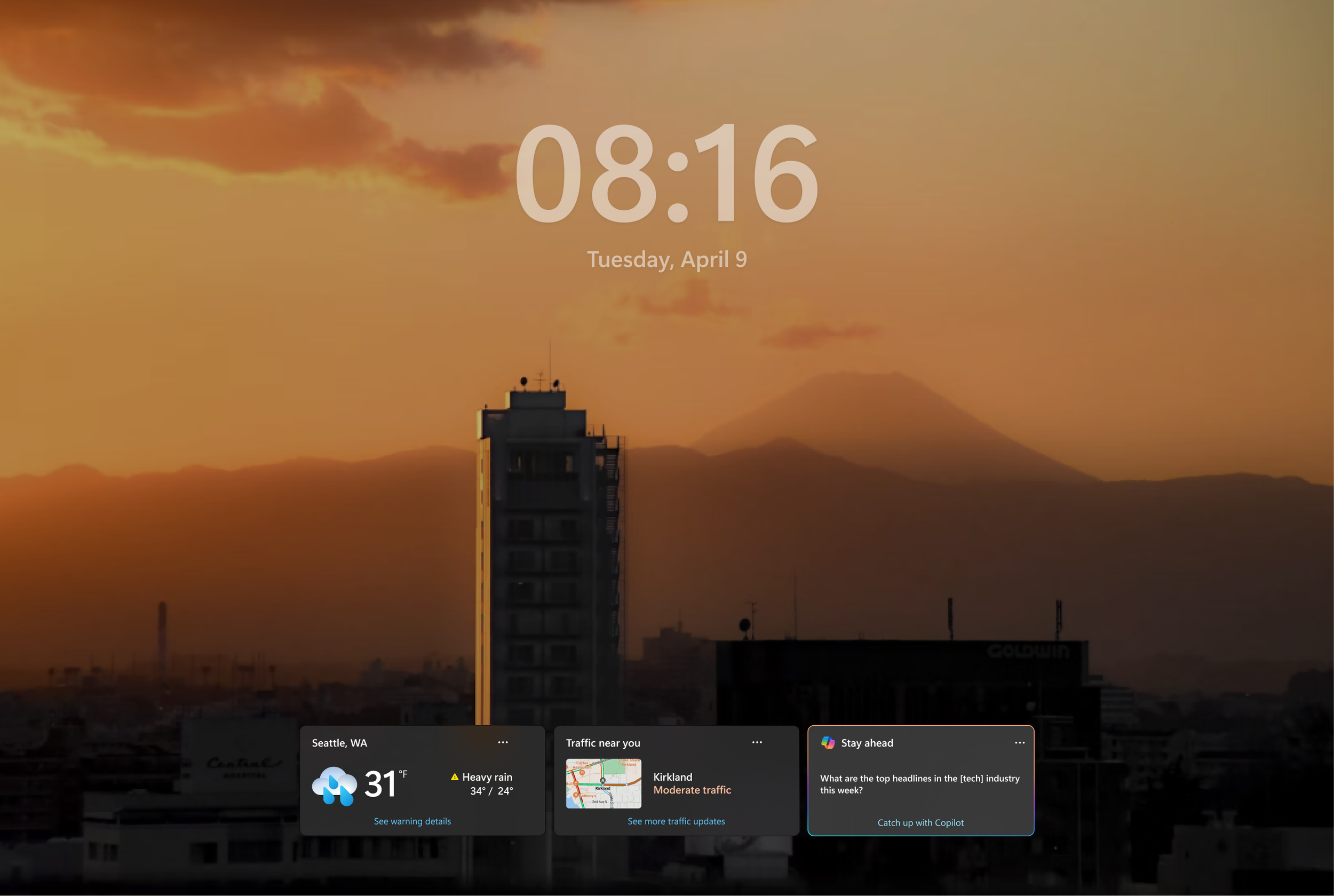Copilot Adoption
Scaling Copilot across the M365 ecosystem to drive 100M adoption.
Context
As part of the Copilot growth team, our focus is on driving 100M MAU free-tier users to the platform. With no playbook and high ambiguity, we set out to identify high-visibility surfaces (Windows, Teams, Outlook, M365 apps), design lightweight entry points, and rapidly test ideas through scrappy prototyping, tight PM collaboration, and partner influence.
Growth • Microsoft • Lead Designer
Understanding
Context
Grow Copilot adoption to 100M MAU, targeting free-tier users, no playbook, high ambiguity, focus on fast, visible experiments across Microsoft surfaces.
Solution
Partnered with PMs to identify and prototype lightweight, context-light Copilot entry points on high-traffic surfaces like Windows lock screen, Teams, and Outlook.
User audience
Information workers (marketers, sales, enterprise users) using M365 without Copilot licenses. Low initial awareness, minimal data available for personalization.
Result
Several experiments reached GA. Research validated role-specific prompts over generic ones. Lock screen nudge engagement informed new design direction.
My responsibilities
Defined adoption opportunities across Windows, Teams, Outlook, and M365 surfaces for free-tier Copilot users
Partnered closely with PMs to clarify goals, define experiments, and align on success metrics
Designed and delivered rapid Figma prototypes (1–5 day turnaround) to pitch internally and externally
Led UX strategy for surface-specific Copilot entry points with no access to Graph or deep personalization
Pitched concepts to leadership and partner teams, navigating resistance and influencing adoption priorities
Synthesized user research insights to iterate on prompt relevance, timing, and placement
Drove cross-surface consistency for Copilot nudging strategies, from lock screen to app-level prompts
Prioritized experiments based on reach, feasibility, partner buy-in, and technical constraints
Transformed abstract mandates into tangible, testable experiences that shipped at scale
01. The strategy.
Focus on:
High-traffic surfaces like the Windows lock screen, notification toasts, Teams pinned cards, and M365 entry points
Prompt-first design, evolving from generic suggestions to role-specific nudges (e.g., marketers, sales)
Balancing partner buy-in, engineering feasibility, and user reach.
Very different design process: fast and unstructured, learn and adapt quickly.
02. Onramps experiment: Windows lockscreen
Hypothesis
Could we surface generic and/or role-based Copilot prompts on the Windows lockscreen to boost awareness and activation, without relying on the Graph?

Central, winning version after many rounds of feedback
The approach combined scrappy prototyping with strategic stakeholder engagement
I explored a central lock screen widget concept for maximum visibility, balancing design ambition with engineering constraints.
After discussions with the Windows team, we pivoted to using the existing widget containers at the bottom of the screen to reduce implementation time.
We designed lightweight, persona-informed nudges (e.g., “Get ready for your next meeting”) that required no user-specific data but still felt timely and valuable.
Every concept was built in Figma with rapid iteration, tested with PMs and design leadership, and pitched to surface owners for alignment.

03. Designing for impact in constraints.
But had to strategically pivot to existing containers for faster delivery, balancing ambition with feasibility and partner alignment.
The flow
04. Relevance drives engagement, not just visibility
Users ignored generic prompts but responded to timely, role-specific nudges. Surface-level visibility alone wasn’t enough; perceived value was key to interaction.
We conducted a moderated study with 8 Information Workers to validate the design:
Key Insights
Most users ignored lock screen widgets, quickly moving to Outlook/Teams.
Meeting-specific nudges were seen as valuable and actionable.
Copilot-aware users were more likely to pause and engage; others needed stronger affordances.
Users preferred prompts that felt useful without being intrusive, reinforcing the need to avoid “Clippy 2.0” patterns.
Research Questions Answered
Context-light nudges worked better when timely and role-relevant.
Visual hierarchy and widget motion/color could improve visibility.
Generic prompts fell flat — specificity mattered.
05. Shaping the roadmap (even without launching)
Our widget explorations revealed critical UX gaps in the Windows lockscreen, prompting the Windows team to rethink placement and visual design, establishing design influence beyond our immediate scope.
Also:
Several other experiments moved to GA; metrics under review
Lockscreen learnings shaped future experiments in other passive entry points (e.g., desktop toasts, notification center)
FAQ
-
I’d prioritize based on frequency of use, task relevance, and cognitive load. Outlook, Calendar, and Teams consistently surfaced as the first apps users open for communication and scheduling as these are high-leverage surfaces for Copilot nudges. I’d double down on in-context, low-friction nudges within these apps, avoiding overuse of broad entry points like the Start menu which users flagged for visual overload. I'd also integrate signals like pinning behavior, job role, and app usage patterns to personalize engagement strategies across the ecosystem. This approach balances user expectation with ecosystem-level impact.
-
Privacy is foundational, not a bolt-on. I proposed a privacy-first design pattern that includes blurred previews, biometric gating for lock screen content, and inline transparency about why a suggestion is surfacing. This is paired with role-aware personalization, so we’re not indiscriminately pushing Copilot features that feel invasive or irrelevant. Additionally, a close partnership with the Privacy and CELA teams ensured a smooth delivery.
-
Engagement metrics by surface: Pin rate, nudge click-throughs, prompt completion
Task success rate: How often Copilot suggestions result in completed user workflows (e.g., meetings prepared, emails drafted)













